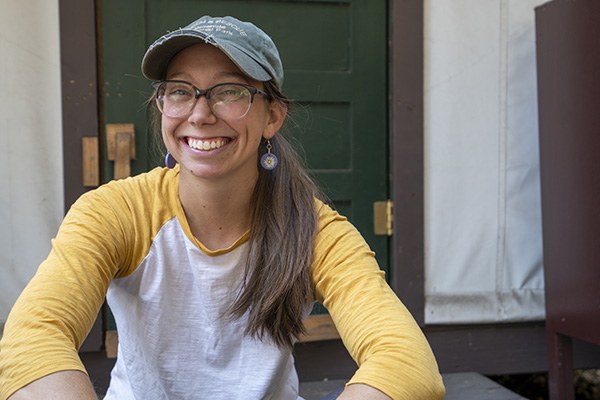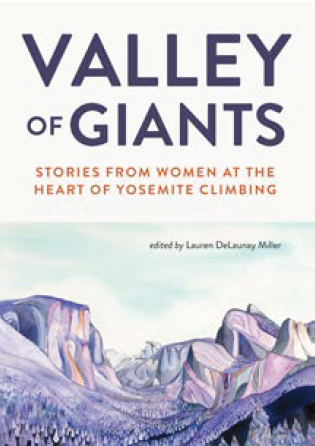
Lauren DeLaunay Miller is the editor of a new anthology that shares the stories, famed and previously untold, of the remarkable women who have shaped Yosemite climbing history. Valley of Giants, published by Mountaineers Books, is a first-of-its-kind collection that gathers stories from journal excerpts, original essays, interviews, and archival materials from almost 40 contributors, including legends like Lynn Hill, Steph Davis, Kate Rutherford, Beth Rodden, Chelsea Griffie, and more. Lauren has worked for Yosemite Search and Rescue, served as Vice President of the Bishop Area Climbers Coalition, and as event coordinator for the American Alpine Club’s Bishop Craggin’ Classic festival. Read on as Lauren discusses her inspiration for this book, what it taught her, and more.
This interview originally appeared on Climbing.com, conducted by Madeline Taub.

Why did you decide to write this book?
The writing of this book was kind of a long process; I probably spent just as long thinking about it as I did writing it. I think that’s because it took me a while to feel like I was the right person to do it, even though I’d always known that it was something that needed to exist. I go back to this Galen Rowell quote: it basically says that he makes no apologies for excluding women from climbing literature history because they weren’t involved in early ascents in Yosemite. When I got to Yosemite, I found that that was not true and that there were inspiring women all around me who were telling their stories — but not with the same authority to write them down. There have been articles that have done a lot to highlight women’s experiences, but I think that there’s something really important about a book that feels really concrete compared to other types of media.
What surprised you while writing this book?
I think I felt surprised by how influential women were in the really early days, I kind of cut [the timeline] off at roped fifth class climbing, which was introduced in Yosemite in the 1930s. But in the 30s, the 40s, the 50s, early 60s, I was pretty surprised at how many women I was able to find from that period. It was
interesting making these wonderful connections between what was happening in the climbing world at the time and what was happening in like a larger American cultural context. I mean, I’m not a historian by trade, but it doesn’t take a genius to see that, oh, in 1972 and 1973, we get Roe vs. Wade, we get Title IX, and we also get the first all-female ascent of El Cap. These things are not coincidences. This book is about climbing, of course, but it really showed me how much it’s not just about climbing.
What makes the history of women in Yosemite unique, as compared to other climbing areas?
In Yosemite climbing, the lore and the storytelling component is huge. I’ve climbed all over the country and I’ve never come to anywhere where people are so steeped in that history. Every time you go to the crag in Yosemite, people refer to the routes by names. I would venture a bet that more people know the first ascensionists of the climb that they’re climbing on in Yosemite than anywhere else. History is much more present there than it is in other places, which made me feel like if you are going to start a project like this, Yosemite was the natural place to start, not just because that’s where I’ve spent most of my climbing career, but because that lore already exists — it just has gaping holes in it.
What are some of the main things you hope people come away with after reading this book?
I tried to write this book in such a way that it’s appealing to all different types of people. I think that there’s a good chance that, if you read it without looking at the title or the names of the authors, you’d hardly even recognize that it’s a book about women’s history because there’s just so many good climbing stories in there. There are some stories in it that are really climb-y, that are really going into the weeds in aid climbing and things like that, and then there’s some stories that just share the joy of being at Camp Four or climbing with your family members. I guess I just want people to realize how many stories are left out, and then think about why that’s been the case and what we can do to make everyone feel like their voices are worth being heard.
Read the full interview at Climbing.com. Valley of Giants is available for purchase at our Seattle Program Center bookstore, online at mountaineersbooks.org, and everywhere books are sold.
This article originally appeared in our Spring 2022 issue of Mountaineer Magazine. To view the original article in magazine form and read more stories from our publication, visit our magazine archive.
 The Mountaineers
The Mountaineers